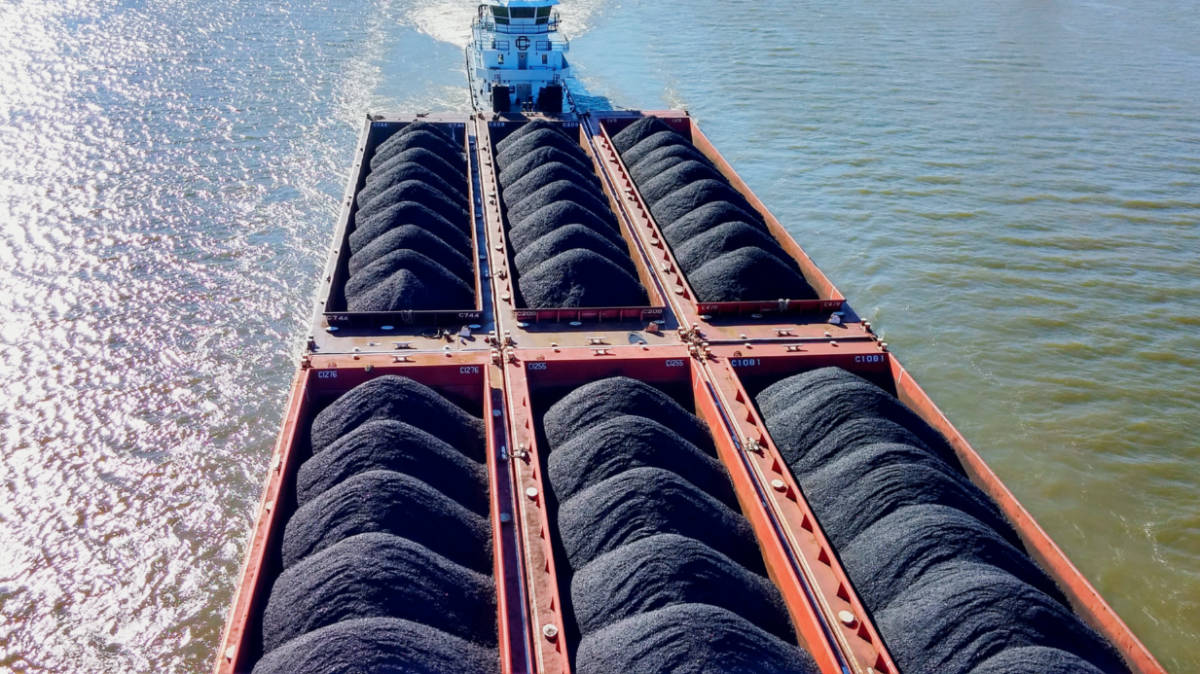Possible silver lining for thermal coal from Glencore production cut

Glencore's 7 million tonne coal production cut in Australia could benefit other coal miners: Getty Images
Australia’s largest shipper of thermal coal, Glencore, will embark on an approximate 7 million-tonne cut to its Australian coal production in 2020 to help rebalance the oversupplied global market.
Glencore’s Australian operations produced 58.1 million tonnes of coal in January-June 2020, down 15 per cent on 68.2 million tonnes in the first half of 2019, the company said in its half-year update.
Chief executive Ivan Glasenberg said at the company’s results presentation it was taking steps to manage its coal production in Australia with measures including temporary site and equipment shutdowns at a number of its coal operations.
“These measures will enable us to align our production levels with market demand, while providing the flexibility to ramp back up as economies recover from the effects of COVID-19,” Glencore said in a statement.
Temporary production cuts in Australia are timed for the September school holidays, it said.
Glencore’s production cut reflected the “terrible” demand situation for thermal coal in Asia, said one coal market source.
Energy markets analyst Tim Buckley, a director at pro-renewable think tank the Institute for Energy Economics and Financial Analysis (IEEFA), said the Australian coal industry was in a difficult position and has been hit by three factors.
Firstly, a normal cyclical market downturn. Secondly, the COVID-19 pandemic which has caused demand destruction for coal. Thirdly, a long-term structural decline as Asian economies pivot to non-fossil fuel technologies for power generation.
“Southeast Asia is pivoting to domestic low cost renewable energy [for reasons of energy security] as they are worried about relying on costly imported fossil fuels such as oil, gas and coal,” he said.
India last month was inundated with bids from global capital for a solar power tender costing half as much as a new coal-fired power plant, he added.
Australian thermal coal is also competing fiercely with liquefied natural gas in electricity markets.
Global thermal coal demand declined by 8.5 per cent year on year in the 2020 first half, said Glencore in its update.
Coal demand in Pacific markets was 4.5 per cent lower and in Atlantic markets 34 per cent lower, “as low-priced LNG in Europe continued to displace coal for power generation,” said the company.
Newcastle thermal coal benchmark prices fell to $US52 per tonne ($72.58/tonne) at the end of June, down 24 per cent since January.
Glencore estimates that 50 per cent of global thermal coal production is cashflow negative at current prices, “requiring further supply cuts through 2020 to return the market to balance”, it stated in its update.
ASX coal miners could benefit from cut
Glencore’s production cut could throw a lifeline to several ASX coal miners that have been struggling with low coal prices as a result of falling electricity demand in Asia from the COVID-19 pandemic.
The production reduction means other coal miners can potentially postpone any action of their own.
ASX-listed coal miners include, New Hope Corporation (ASX: NHC) 80 per cent owner of the Bengalla mine, TerraComm (ASX: TER) operator of the 2 million tonne per annum Blair Athol mine in Queensland, Whitehaven Coal (ASX: WHC) with its flagship Maules Creek mine. There is also Isaac Plains mine operator Stanmore Coal (ASX:SMR).
Yancoal Australia (ASX: YAL). a partner with Glencore in the giant Hunter Valley Operations coal mine in NSW actually increased its attributable coal production 12 per cent to 18.4 million tonnes in the January-June period.
ASX-listed coal stock price charts
Glencore’s coal production on the slide
Glencore forecast in July that its coal production will be around 111 million to 117 million tonnes in 2020, based on targeted volume reductions in Australia and Colombia in the second half of the year.
This is down from Glencore’s 129 million to 135 million tonnes of coal production in 2019.
The miner has already reduced production at its Colombian coal operations, reducing its attributable output from its 33.3 per cent owned Cerrejon mine by 1.5 to 2 million tonnes, and cutting production at its Prodeco mine by 3.5 million tonnes, in the 2020 half year.
Glencore said in February 2019 it was capping its production of thermal and metallurgical coal at then prevailing levels of around 150 million tonnes per annum, as it repositions capital investment to commodities used in low carbon emission technologies. The company is investing in a new, replacement coal mine in Queensland.
Coal haulage volumes steady for Aurizon
Meanwhile, Australian rail company Aurizon (ASX: AZJ) is forecasting flat haulage volumes for coal in the 2021 financial year of 210 to 220 million tonnes “based on the current view of COVID-19 impact on steel demand”.
“The coal business delivered 214 million tonnes of coal for customers during financial year 2020, which is broadly in line with financial year 2019,” said the company in an update.
The company said in its results presentation for the 2020 financial year that COVID-19 has had a “limited impact” on exports of Australian metallurgical and thermal coal.
Volumes for met coal are down 9 per cent in the January-June period, and thermal coal shipments are flat, Aurizon said.
Aurizon had several wins for new coal haulage business in the 2020 financial year including from Peabody in NSW and Queensland, Coronado for its Curragh mine, and Bluescope (ASX:BSL) in the Illawarra coal region of NSW.
Related Topics
UNLOCK INSIGHTS
Discover the untold stories of emerging ASX stocks.
Daily news and expert analysis, it's free to subscribe.
By proceeding, you confirm you understand that we handle personal information in accordance with our Privacy Policy.








